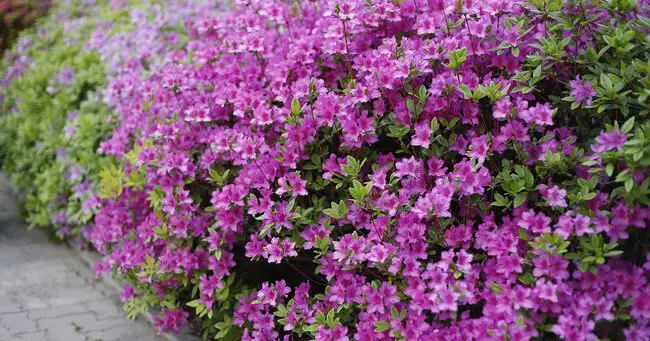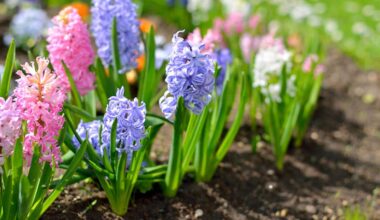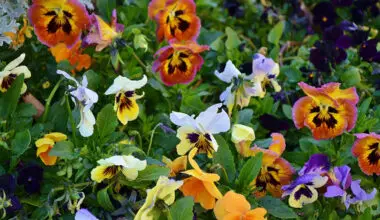The azalea unfolds a generous flowering, whether outside, in the flowerbeds or undergrowth, isolated or in groups, or indoors for very beautiful pots.
Contents
When to plant the azalea
It can be buried at any time of the year. However, autumn is the best time to take advantage of the warm summer soil and the frequent rainfall during this season, which will provide the necessary watering for new plantings.
It will be well installed before winter, and will flower as early as the following spring! In the same way, install the shrub in a container in autumn to take advantage of its first bloom the following spring.
Where to plant it
In its original climate, the azalea grows on very wet mountain slopes, on acidic soil that is very well drained due to the slope. The closer you get to these conditions, the better your azalea will do.
This shrub belongs to the group of plants called “heather earth”, which means that it grows on acidic and humus-rich soil. Avoid calcareous soils. Plant in well-drained soil (avoid heavy soils), but always cool.
Azaleas prefer semi-shade or light shade, whereas deciduous azaleas need sun to flower well. However, avoid scorching exposures, as the morning sun is milder.
Ideally, the maximum temperature should not exceed 77°F. Azaleas are not suitable for hot, dry regions.
Preparing the soil for azaleas
The soil should be acidic, with a pH of around 4.5 to 5.5. If your soil is naturally acidic, there is no need to add heather earth, but if the soil is neutral, heather earth should be used or acidified by adding peat or sulphur flowers.
In calcareous soil, either you abandon the idea of growing azaleas, or you decompose part of your garden and replace the soil completely with heather soil. When your soil is unsuitable, i.e. heavy or not acidic enough, the good solution is to make raised beds.
Azaleas are transplanted into the garden in the fall or spring. The planting hole should be wide, but not too deep (18 inches). The soil will be well tilled and lightened with organic matter (compost and potting soil, possibly heather soil).
Drainage must be correct, as roots rot in poorly aerated soil. Once planted, your azalea must be watered abundantly immediately and then regularly; with rainwater throughout the first year of cultivation and sometimes again during the second summer when it is dry.
Maintaining the azalea outdoors
Keep the soil moist during the weeks following planting. Afterwards, water once a week during the dry period. The roots of the azalea are superficial and spread out: they dry out easily. Mulch the base of the shrub to maintain humidity with a mulch of pine bark, for example.
Heather soil and peat are poor environments, if you have used them to plant your azalea, it may be necessary to fertilize it. Bring an organic fertilizer (compost, manure, etc.) in the spring.
Water and fertilize the azaleas regularly with a special fertilizer for heather soil plants. The substrate should never dry, but should not be wet either. Bring a handful of long-lasting fertilizer in the spring and add it to the substrate, or add a liquid fertilizer to the watering water every month between March and September.
Remove wilted flowers by hand.
Once well established, the azalea doesn’t need much care.
Diseases, pests and parasites
Cultivated under good conditions, the azalea is resistant to both diseases and pests, but because these ideal conditions are rarely met, it can fall prey to both.
In too limy or heavy soil, or if watered with hard water, the azalea’s leaves discolor and turn yellow. This is called chlorosis, which disappears as soon as the right growing conditions are restored. In an emergency, bring a fertilizer rich in iron and magnesium.
In poorly drained soil, leaves and buds may turn brown.
A branch that dries out suddenly indicates a rot due to phytophthora cinnamomi, a fungus that settles on the roots. This is one of the most common diseases of the azalea and it is often too late when it is noticed. The plant is doomed in the long run, it must be burned.
Aphids attack mainly potted azaleas.
Indoors, if the leaves tarnish and the buds are deformed, the azalea is attacked by red spiders, which proliferate in an atmosphere that is too hot (over 64 °F) and dry.
What is the difference between azaleas and rhododendrons?
Azaleas are actually a subgenus (Azalea) of the genus Rhododendron, in other words: all azaleas are rhododendrons, but not all rhododendrons are azaleas, because there are several subgenera within Rhododendrons.
From a botanical point of view, the subgenus Azalea is characterized by flowers that have only 5 stamens, while other rhododendrons have 10 stamens.
From the planter box’s point of view, azaleas are generally smaller in size and generally have smaller leaves. They often have deciduous foliage. But since it can’t be that simple, some azaleas have evergreen leaves. We can say that the name azalea is rather a horticultural term.
Summary
Shrub particularly flowering in spring, the azalea forms very colorful bushes, which sometimes disappear under the flowers. Deciduous or evergreen, it prefers non-burning situations and resists well to the cold.









